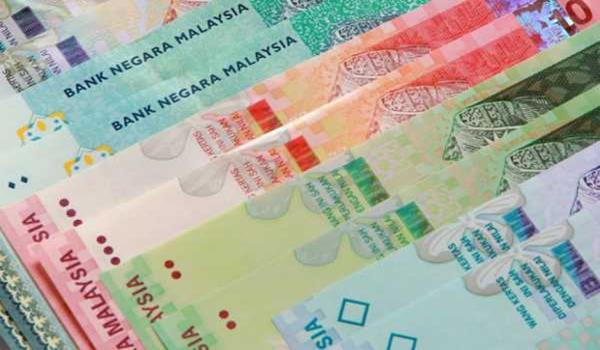Making the argument that exchange rates reflect economic performance in a world with a multitude of exchange rate regimes is nonsense.
I used this analogy in a conversation last week, and its too apt not to publish it.
Imagine you’re in the stock market and trying to evaluate two different stocks. Now, fundamental based analysis would look at earnings, book value, gearing, corporate strategy and so on, and come up with a target price for the stocks which reflects what the price of a stock should be.
The market of course can have very different ideas about how much a stock is worth, and that difference between the fundamental value and market value is one of the methods by which analysts would give a buy, hold or sell call.
Be that as it may, the stock price is often treated as a gauge of company value – the better a company performs, the higher its stock price and vice versa. That might make sense from an individual company perspective – cross-company comparisons are trickier.
Stock prices are determined by so many different factors that a direct comparison of the stock price of two companies really tells you nothing. Just to take one example, take two companies with the same overall “value”, but one with 100 thousand shares and the other 1 million. The company with the smaller capital base would have (theoretically) a share price 10x greater than the one with the larger capital base, despite the aggregate value of the shares being the same. One company isn’t better than the other just because it has a higher stock price.
What has all this got to do with exchange rates? You’ll get a conceptual idea of what an exchange rate is, by taking our two company example above and instead of quoting the stock prices in currency, quoting them in relation to each other. In our example above, the price of Company A stock (with 100k shares) has an exchange value of 1 to 10 of Company B stock.
Let’s add some shocks and see what insights we can get from them. Assume sales at both companies are growing at the same pace. What happens to the exchange rate? That’s right, nothing (or at least, nothing if the market is rational and pricing the shares based on fundamental value). Take the opposite tack – if sales at both companies were declining at the same pace, what happens to the exchange rate? Again, nothing.
Unlike the absolute price of either company stock, the exchange rate between the two shares conveys NO information on how well either company is doing.
Let’s take a more complicated example. Let’s say Company A is increasing sales, but Company B is not. What happens to the exchange rate? Company A’s “currency” should appreciate, say from 10 to 11. Let’s flip the situation a little bit – say Company A sales are stagnant, but Company B sales are actually dropping. Again, A’s “currency” would appreciate. Here you can gain some information – A is doing better than B – but again, the exchange rate tells you nothing about individual company performance. Either A or B could be doing better or worse, but you can’t tell from the exchange rate which of these situations is true.
Now let’s take this to the next level – assume Company A has a share buyback scheme, and this scheme aims to regulate the value of Company A shares relative to an outside denominator, for example in Company C shares. That is, A buys and sells its own shares on the market to maintain a fixed exchange value with Company C shares, irrespective of the price performance of Company C shares or the company performance of A.
Under these circumstances the exchange rate between A and B shares now contains NO information about the relative performance of either company, because in essence, Company A’s share price now reflects Company C’s performance, not its own.
This is really the situation we have today – the “performance” of a currency is not much of a barometer of economic health. All the major economies (with the exception of China) have freely floating exchange rates. The rest of the world on the other hand has a smorgasbord of exchange rate arrangements, from outright dollarisation (Zimbabwe) and currency boards (Hong Kong) or currency unions (Brunei, Europe), to fixed pegs (most of the Middle East and Africa, and to a certain extent Singapore), to managed or relatively free floating regimes like Malaysia’s, or Switzerland’s. Some countries, like Iran and Venezuela, have multiple official exchange rates for different purposes (and very naturally, an unofficial black market rate).
Given the differences in monetary policy and exchange rate regimes, exchange rates in these times convey very little useful information on the relative performance of economies.
One might have made a decent argument that such comparisons would be relevant under the old pre-WWII Gold standard, where all currencies were anchored on gold. One might have made a much more tenuous argument that the same applied to the Bretton-Woods system (1944-1973), where all currencies were anchored on the US Dollar, and the USD remained anchored on gold. Since business cycles in the US economy were completely divorced from gold bullion supply, this is a harder stand to take.
To summarise, without knowing what the specific respective exchange rate arrangements are, an appreciation of one currency against another could reflect:
- Both Country A and Country B are doing better, but Country A is doing better than Country B; or
- Both Country A and Country B are doing better, but Country B is doing better than Country A; or
- Both Country A and Country B are doing worse, but Country A is doing better than Country B; or
- Both Country A and Country B are doing worse, but Country B is doing better than Country A; or
- Neither Country A nor Country B are doing better or worse.
Making the argument that exchange rates reflect economic performance in a world with a multitude of exchange rate regimes is nonsense.










